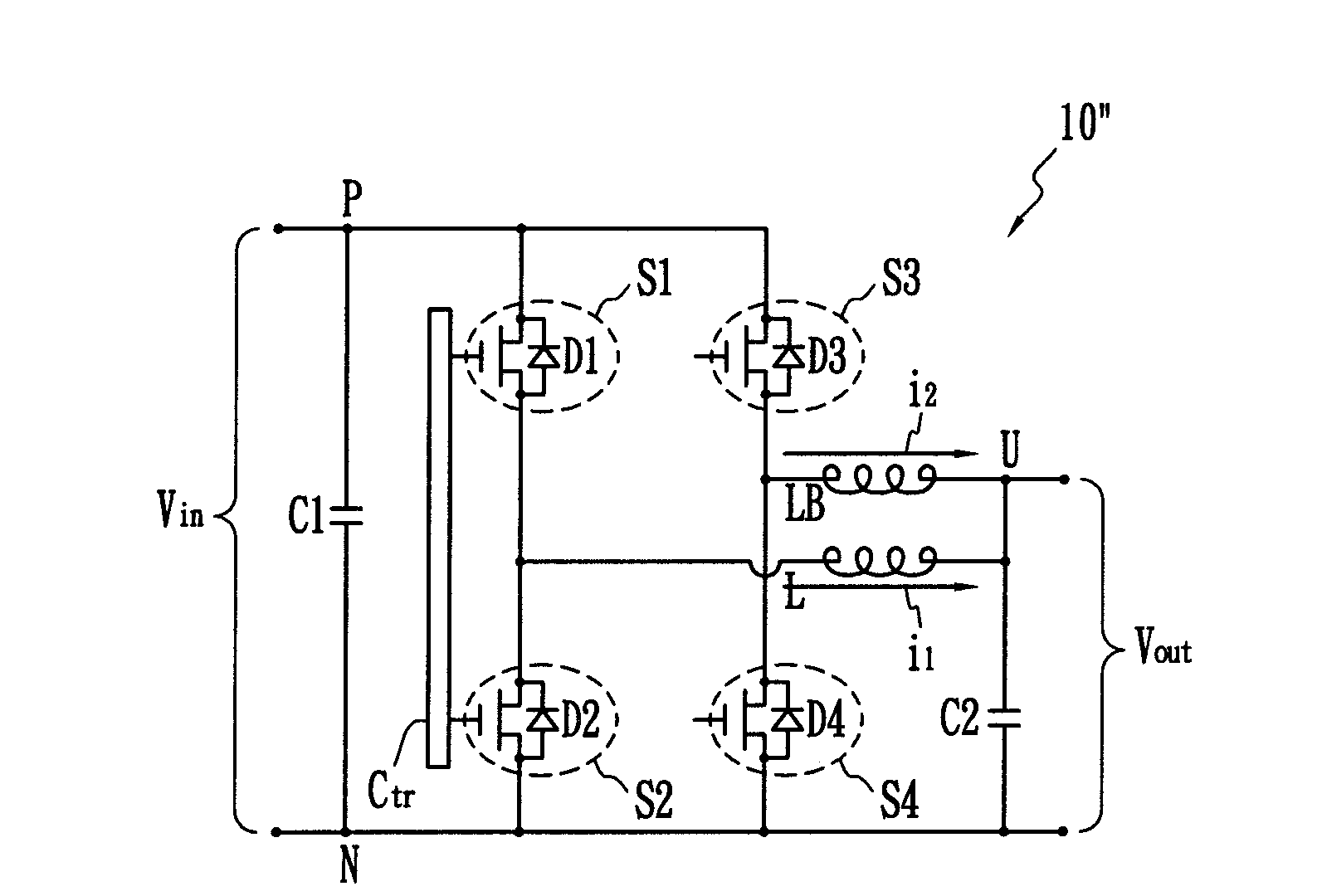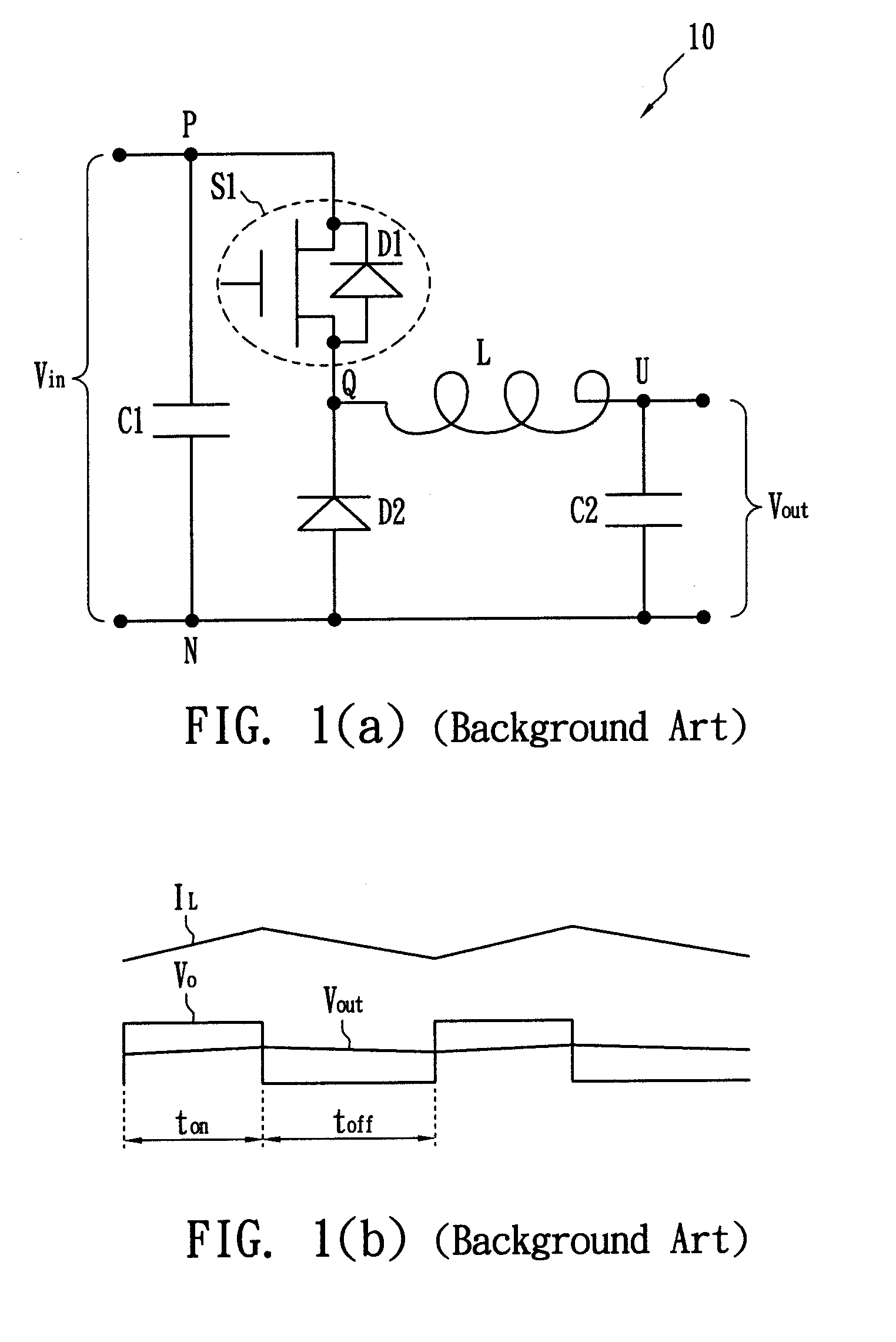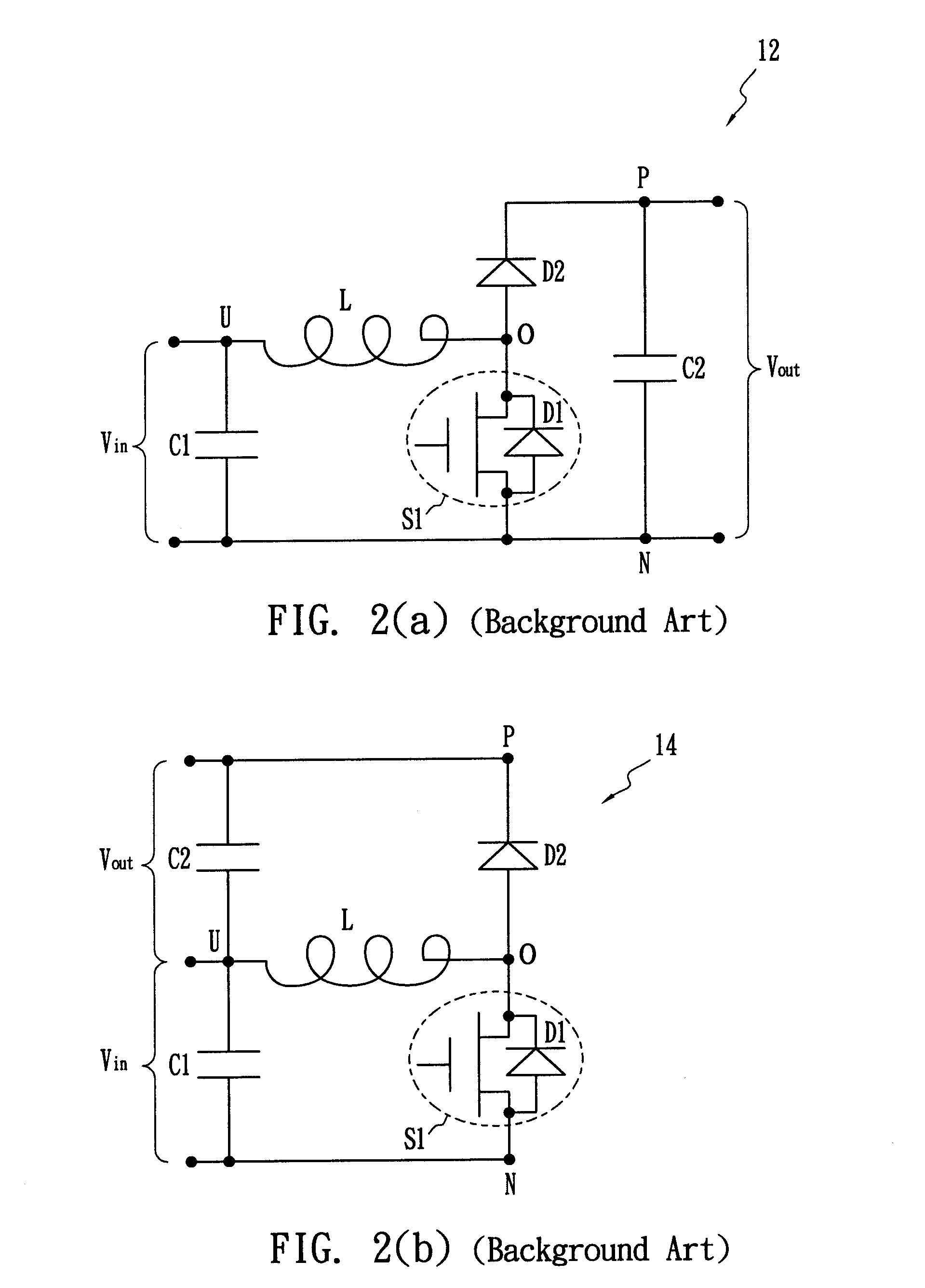Zero voltage switch method for fly-back converter
a converter and zero-voltage switch technology, applied in the direction of electric variable regulation, process and machine control, instruments, etc., can solve the problems of bad cross regulation, and switching noises that transmit back into power lines or radiate into space, so as to reduce the loss of switching and disturbance, the effect of low conduction and reducing the size of the converter
- Summary
- Abstract
- Description
- Claims
- Application Information
AI Technical Summary
Benefits of technology
Problems solved by technology
Method used
Image
Examples
Embodiment Construction
[0060]The following description starts from the basic structure of the present invention, followed by its derivates and applications. The real application may use any composition of the basic invention or its derivative techniques, and it may repeatedly be used in different combinations.
[0061]The key idea of the present invention works on synchronous converters, in which the synchronous switch is controlled beyond the range of prior art; that is, negative conduction mode.
[0062]Some terms used hereinafter are defined as follows. The term “switch module” means a MOSFET connected to a diode in parallel. The term “active” refers to the period in which the MOSFET of the switch module is turned on to be conductive, allowing a current to flow through. The term “passive” is defined as the period in which the switch module allows a current to flow through the diode of the switch module only in one direction. The term “open” or “opened,” means the switch module is non-conductive. When a curre...
PUM
 Login to View More
Login to View More Abstract
Description
Claims
Application Information
 Login to View More
Login to View More - R&D
- Intellectual Property
- Life Sciences
- Materials
- Tech Scout
- Unparalleled Data Quality
- Higher Quality Content
- 60% Fewer Hallucinations
Browse by: Latest US Patents, China's latest patents, Technical Efficacy Thesaurus, Application Domain, Technology Topic, Popular Technical Reports.
© 2025 PatSnap. All rights reserved.Legal|Privacy policy|Modern Slavery Act Transparency Statement|Sitemap|About US| Contact US: help@patsnap.com



